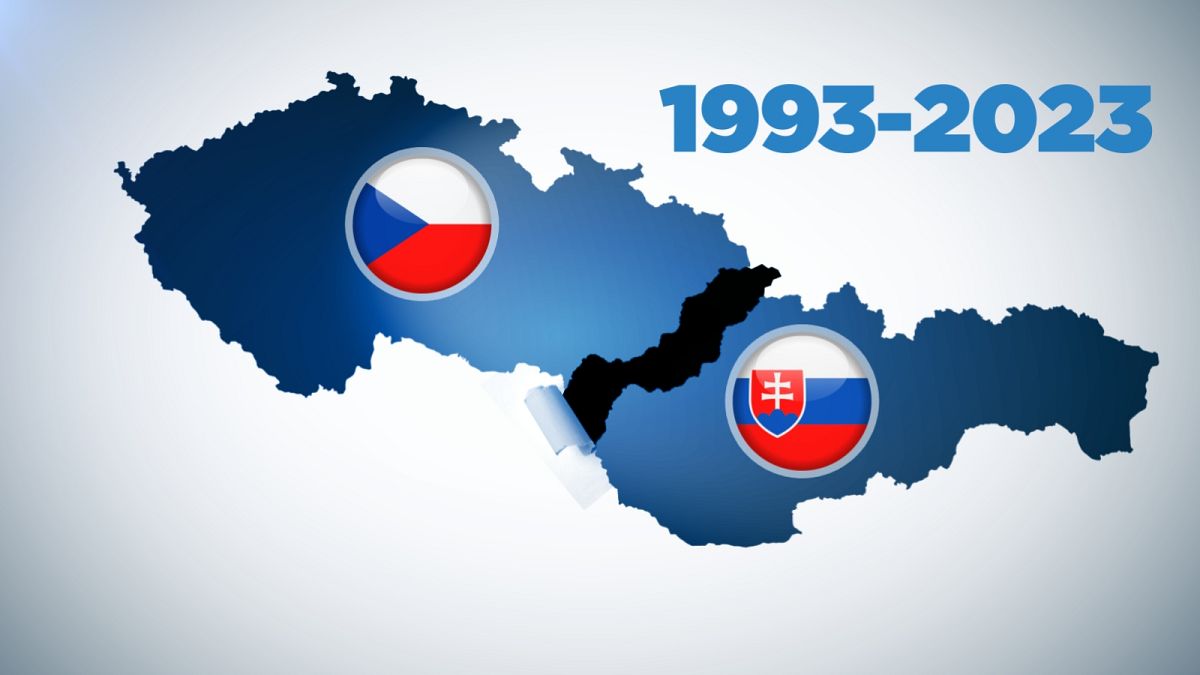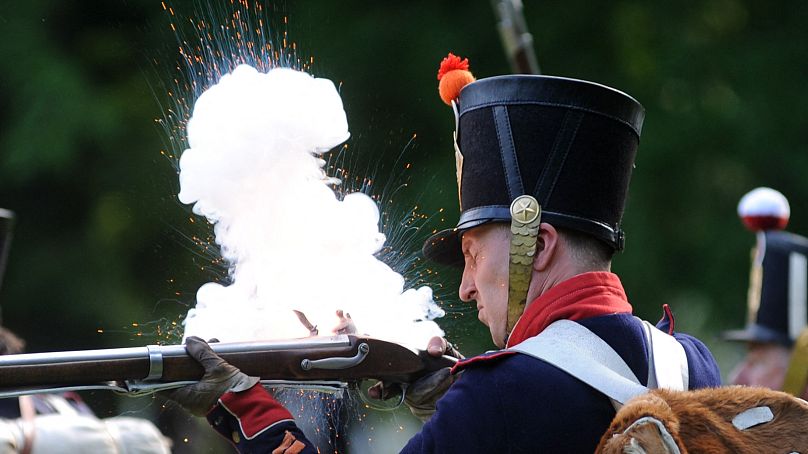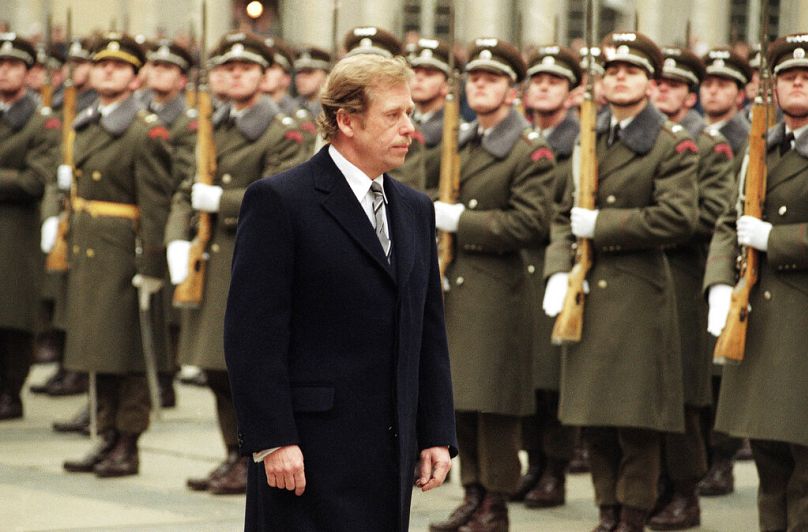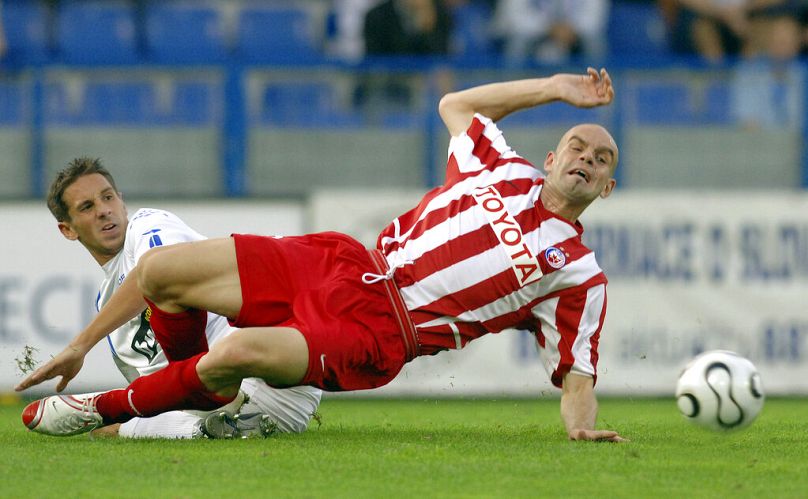When Czechoslovakia split in half 30 years go, it became Europe's most successful breakup in modern history.
Ondrej and Katarína first met in 2008, more than a decade after their countries divorced.
He, a Czech, and she, a Slovak, see their cross-national marriage as anything but unusual.
“My uncle is Slovak and has a Czech wife. My sister is getting married to a Czech man,” Katarína said. Her husband chimed in: “Many of us don't think of Slovakia as a foreign country in the true sense of the word.”
January 1st marked the 30th anniversary of the breakup of Czechoslovakia into the Czech Republic and Slovak Republic, two separate states. The “Velvet Divorce”, as it’s known abroad, is remembered as Europe’s most peaceful and successful breakup in recent history.
It was agreed without conflict or acrimony, albeit without the public’s opinion being asked, and politicians from both sides hammered it out in over just six days.
This year’s anniversary has added gravitas. Vladimir Putin launched his full-scale invasion of Ukraine in February 2022 because of an abhorrent belief that Ukrainians, who broke away from the Soviet Union in 1991, are not a true nationality and that their territory ought to be part of the Russian Federation.
Tensions are boiling between Serbia and Kosovo, two former compatriots, while the aspirations of independence from the United Kingdom of around half the voters in Scotland rumble on -- as do separatist claims in Catalonia and Belgium.
Slovaks are now by far the largest foreign national group living in the Czech Republic. Differences in their languages are cigarette-paper thin. Even before both joined the European Union in 2004, travelling between both countries was relatively simple and a customs union from 1993 onwards meant trade was seamless.
And it has led to some oddities.
Andrej Babiš was the Czech prime minister until 2021. Next week, he will likely force a run-off election in the race to become the next Czech president. But he was born and raised in Slovakia’s capital Bratislava and only relocated to the Czech Republic after 1993, in his late thirties.
Slovak President Zuzana Čaputová was ranked as the most popular politician amongst Czechs in a survey by CVVM, a pollster, in late 2021.
"Even though many of us were born in one country, and now we live in two, we still have excellent relations and are able to work together. I personally have a Slovak husband," the speaker of the Czech Chamber of Deputies, Markéta Pekarová Adamová, joked at an anniversary ceremony last weekend.
Although no one questions the fraternity between both sides, the breakup remains a sore point for some.
Median, another pollster, found in a recent survey that 47% of Czechs and 62% of Slovaks now think the separation was the right decision. But 48% percent of Czechs and 33% percent of Slovaks still say it was a bad move.
“Nostalgia for Czechoslovakia is strong in the Czech Republic among the older generation; the younger generation does not care and usually has no opinion on it. In Slovakia, the situation is more or less similar,” Lubomír Kopeček, a political science professor at Masaryk University, told Euronews.
Many people opposed it at the time. Czechoslovakia’s hero of anti-communist resistance resigned as president the day after separation was decided.
The riddle of the Velvet Divorce is that an event so peaceful and, decades later, viewed as a success, could have been conducted despite such opposition at the time.
A short history lesson
In many ways, the breakup of Czechoslovakia was more straightforward than its formation.
By the early 20th century, neither Czechs nor Slovaks had enjoyed their own state for centuries, nor had they much history in cooperating bureaucratically. The Slovak lands (or “Northern Hungary” as they were known at the time) were ruled from Budapest under the Habsburg dual Austro-Hungarian empire. The Czech lands, meanwhile, came under Vienna’s purview.
Whereas the Czech lands were the industrial powerhouse of the Habsburg empire, Slovak territory was far more agricultural and undeveloped.
Protestantism was strong in Bohemia, the western heartland of the Czechs, while Catholicism reigned amongst Slovaks. (Today, Czechs are the least religious of Europeans while Slovaks are amongst the most God-fearing, according to regular polls.)
However, Czech and Slovak nationalism developed around the same time in the late 19th century and both were centred on their mutually-intelligible languages. Both believed that they would stand a better chance of gaining statehood after the First World War if they partnered together.
Many other national groups who remained isolated were absorbed into other countries amid the nation-building experiment after 1918.
Cohabitation also made sense to politicians at the time. Tomáš Masaryk, the founding father of Czechoslovakia and its first president, was the son of a Slovak and a Czech. Milan Rastislav Štefánik, the Slovak leader, spent most of his early life studying in Prague.
Moreover, while Czechs and Slovaks might have been majorities in their own territories, there were significant numbers of ethnic Germans, Hungarians and Ukrainians which meant Czechsloavkia was destined to be a multinational state.
But Slovakia had its first taste of “independence” from Prague in 1939 when its clerical-fascist leader Jozef Tiso broke away to form the First Slovak Republic, a Nazi puppet state. Soon after, Nazi Germany invaded the entirety of the Czech lands, ruling over it until 1945 as the “Protectorate of Bohemia and Moravia.”
After the Second World War, Czechoslovakia was reconstituted and, when the communist party took power in 1948, federalised the two regions. Autonomy was expansive.
The collapse of Communism
The defining moment came in 1989 when the communist regime of Czechoslovakia collapsed. Unique in Eastern Europe, it was mostly a peaceful event, earning it the moniker of a “velvet revolution.”
But socialism’s fall also led to what locals called the “hyphen war”, a debate on whether the new post-socialist state should be the “Czechoslovak Republic” or the “Czecho-Slovak Republic”, the latter favoured by Slovak patriots. Century-old schisms came to a head in 1992.
English speakers know the event as the “Velvet Divorce”, a wordplay on the peaceful Velvet Revolution that brought down Czechoslovakia's communist regime four years earlier. It’s not a term usually used by Czech and Slovaks speakers, though.
Some foreign observers see the separation as a continuation of the fall of communism in 1989 and since both events were peaceful, the adjective “velvet” may seem appropriate, Filip Kostelka, a professor at the European University Institute, explained.
But for Czechs and Slovaks, the fall of communism in 1989 and the breakup of Czechoslovakia are clearly two different events. “The separation was not a natural or inevitable outcome of the fall of communism,” Kostelka told Euronews. “There was no popular support for it.”
Václav Havel, the icon of anti-communism who was elected president of Czechoslovakia in 1989, was vehemently against a divorce. He announced his resignation the day after the Slovak parliament voted for separation.
Whereas the end of communism in 1989 was heralded as a democratic event, a joyous outcome of decades of civil society struggles and victory for the powerless, the breakup of Czechoslovakia was rather less egalitarian.
Post-breakup life in neighbouring countries
In early 1992, the Czechs and Slovaks went to the polls for their own federal territories. Czechs opted for the centre-right Civic Democratic party under Vaclav Klaus, who wanted to centralise power to kickstart economic liberalisation.
Slovaks, meanwhile, voted for the populist Vladimir Mečiar, who campaigned on greater sovereignty for Slovak territory.
Months later, in July 1992, the Slovak Parliament adopted the Declaration of Independence. It took just six days, after meetings in Bratislava, for Czech and Slovak negotiators to agree to dissolve their common state.
But the public was never asked their opinion. And politicians decided against putting it to a referendum because they thought it was too dangerous.
“The worst thing that could have happened at the time was for one part of the country to say it wanted divorce and for the other to say the opposite,” the then-head of the Czech federal parliament, Jan Stránsky, reflected years later in a media interview.
“I dare say the danger was so great it would not have stopped short of civil war,” he added.
Most Czechs and Slovaks accepted their new fate. Very few people today want an actual reunion. The idea of a “Czechoslovak” who is neither only Czech or Slovak has passed into the history books.
Every few years or so the football associations of both countries meet to discuss and then reject ideas to reform a joint Czecho-Slovak league to boost competitiveness. Most years a duet between Czech and Slovak bands, often a lament on their breakup, becomes a chart-topper.
But the main lesson is that “a peaceful break-up followed by cordial and healthy neighbourly relations is possible,” Kostelka said. However, the separation "may be difficult [for other countries] to emulate.”



